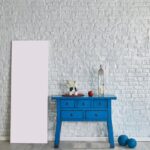Are you looking to add a touch of elegance and charm to your home decor? If so, learning how to ruffle fabric for home decoration is the perfect way to achieve this. Ruffling fabric can add texture, dimension, and a romantic feel to any room in your house. Whether you want to create ruffled curtains, pillow covers, or tablecloths, mastering the art of ruffling fabric will elevate your home decor to the next level.
Ruffling fabric may seem like a daunting task at first, but understanding the basics is key to achieving beautiful and professional-looking results. From choosing the right fabric to mastering different ruffling techniques, this article will guide you through everything you need to know about adding ruffled fabric elements to your home decor.
In this comprehensive guide, we will cover various aspects of ruffling fabric for home decoration. This includes tips on selecting the best type of fabric for ruffling, essential tools and materials needed for the job, step-by-step instructions on how to ruffle fabric effectively, and creative ideas on how to incorporate ruffled fabric into your interior design.
By the end of this article, you’ll be equipped with practical knowledge and inspiration for transforming your living space with perfectly ruffled fabrics.
Choosing the Right Fabric for Ruffling
When it comes to ruffling fabric for home decoration, choosing the right type of fabric is crucial for achieving the desired look and ensuring that the ruffles hold their shape. Here are some tips and tricks to keep in mind when selecting the fabric for your ruffling project:
1. Consider the weight and drape of the fabric: Lightweight, flowing fabrics such as chiffon, organza, and silk are ideal for creating delicate, romantic ruffles. Heavier fabrics like cotton and linen can be used for more structured ruffles with a rustic or vintage-inspired feel.
2. Think about the texture: Textured fabrics like lace, tulle, or jacquard can add an extra dimension to your ruffled design. The texture of the fabric can enhance the visual appeal of the ruffles and create a more interesting finish.
3. Choose a color that complements your home decor: When selecting the fabric for your ruffling project, consider how it will complement the color scheme and aesthetic of the room where it will be used. Neutral colors like white, ivory, or pastels are versatile and timeless choices for ruffled home decor.
4. Test different fabrics before committing to a large project: If you’re unsure about which fabric to use for your ruffling project, consider testing small swatches of different fabrics to see how they respond to various ruffling techniques. This will help you determine which fabric works best for achieving the desired effect.
By carefully considering these tips and tricks when choosing fabric for ruffling, you can ensure that your home decoration projects turn out beautifully and perfectly complement your interior design style.
Tools and Materials Needed for Ruffling Fabric
When it comes to ruffling fabric for home decoration, having the right tools and materials is essential for achieving the best results. Here are some basic items you will need to get started:
1. Sewing Machine: While ruffling fabric can be done by hand, using a sewing machine can make the process much faster and more precise. Look for a machine with a gathering foot or a ruffler attachment to make the job even easier.
2. Fabric: Choose a lightweight fabric that is easy to manipulate for ruffling. Cotton, muslin, chiffon, and organza are all great options for creating beautiful ruffles.
3. Thread: Make sure you have thread that matches or complements the color of your fabric. You’ll also need enough thread to complete your project, as ruffling can use up more thread than standard sewing projects.
4. Pins or Clips: These are essential for holding your fabric in place while you gather and sew your ruffles. Look for sturdy pins or clips that will keep your fabric secure during the process.
5. Iron and Ironing Board: Pressing your fabric before and after ruffling is crucial for achieving neat, professional-looking results. An iron and ironing board will help you smooth out any wrinkles and ensure your ruffles lay flat.
By having these basic tools and materials on hand, you’ll be well-equipped to begin ruffling fabric for home decoration projects effectively and efficiently. Whether you’re creating curtains, throw pillows, or table runners, having the right supplies will set you up for success in adding beautiful ruffled accents to your décor.
Step-by-Step Guide to Ruffling Fabric for Home Decoration
Ruffling fabric for home decoration can add a touch of elegance and charm to any room. Whether you want to add ruffled curtains, pillows, or tablecloths, knowing how to properly ruffle fabric is essential. In this step-by-step guide, we will walk you through the process of ruffling fabric for your home decor projects.
First, start by determining the length of fabric you will need for your project. It’s important to remember that the length of the fabric will determine how full or gathered your ruffles will be. As a general rule of thumb, you will need two to three times the width of your desired finished project length in fabric.
Once you’ve cut your fabric to size, it’s time to prepare for ruffling. One popular method is using a sewing machine with a gathering foot attachment. Simply adjust the settings on your sewing machine to create long stitches and sew along the edge of the fabric. Gently pull on the bobbin threads while holding onto the top thread as you guide the fabric through, creating even gathers as you go.
If you don’t have access to a sewing machine or prefer hand-sewing, another method is using basting stitches. Simply sew long stitches along the edge of the fabric and carefully pull on one end of the thread to gather it evenly.
After ruffling your fabric, make sure to secure the ends by tying off or backstitching so that your ruffles stay in place. With these techniques in mind, mastering how to ruffle fabric for home decoration will open up doors for a variety of creative possibilities in interior design.
Different Techniques for Ruffling Fabric
Gathered Fabric
To create gathered fabric, you will need to use a long running stitch along the edge of the fabric. Start by hand-sewing a straight line of stitches, about 1/4 inch from the edge of the fabric. Then, gently tug on the thread and push the fabric along the thread until you have created even gathers. Once your fabric is ruffled to your desired fullness, knot off the thread to secure the gathers in place.
Pleated Fabric
Pleated ruffles are created by folding and pinning the fabric into small, even accordion-like pleats. To achieve this look, start by marking and folding the fabric at regular intervals. Secure each fold with straight pins or basting stitches to hold them in place. Then, press the folded pleats with an iron to set them before removing any pins or stitching.
Frilled Fabric
The frilled ruffle technique involves creating small, tight rolls or loops along the edge of the fabric for a more textured and dimensional look. To accomplish this style, start by hand-gathering and twisting sections of fabric into small loops or swirls. Use small whipstitches to secure these loops as you go along, creating a frilly and whimsical effect.
These different techniques allow for endless creativity when it comes to incorporating ruffled fabric into home decoration projects. Whether you’re adding a touch of romance with gathered ruffles or elegance with pleated ruffles, experimenting with these various methods will help you achieve beautiful and unique decor pieces.
Creative Ideas for Using Ruffled Fabric in Home Decoration
Using ruffled fabric in home decoration is a great way to add texture, visual interest, and a touch of whimsy to any space. Whether you are a beginner or an experienced DIY enthusiast, there are numerous creative ideas for incorporating ruffled fabric into your home decor.
One popular way to use ruffled fabric is by creating beautiful curtains or drapes for your windows. Ruffled curtains can add a soft and romantic feel to a room, making it look more inviting and cozy. You can also use ruffled fabric to make valances or tie-backs for your existing curtains, adding a decorative touch without the need for full-length ruffles.
Another creative idea for using ruffled fabric in home decoration is to make throw pillows or cushion covers with ruffle accents. Adding ruffles to plain pillow covers can instantly give them a charming and elegant look, transforming the overall appearance of your living room or bedroom. You can choose coordinating fabrics and colors to match your existing decor or opt for contrasting patterns for a more eclectic style.
Finally, consider using ruffled fabric to create unique table runners, placemats, or even chair covers for special occasions such as weddings or parties. Ruffled linens can elevate the look of your dining table and create a sophisticated yet celebratory ambiance for any event.
| Ruffled Fabric Home Decor Idea | Description |
|---|---|
| Ruffled Curtains | Add softness and romance to any room by creating beautiful ruffled curtains. |
| Ruffle Accent Throw Pillows | Easily transform plain pillow covers into charming and elegant decor pieces with ruffle accents. |
| Ruffled Table Linens | Create a sophisticated yet festive ambiance by using ruffled fabric for table runners, placemats, and chair covers at special events. |
Troubleshooting Common Issues When Ruffling Fabric
Uneven Ruffles
When ruffling fabric for home decoration, one common issue you may encounter is uneven ruffles. This can happen when the fabric isn’t gathered or pleated evenly, resulting in a lopsided or messy look. To troubleshoot this issue, make sure to carefully measure and mark the fabric before ruffling.
Use pins or basting stitches to create even gathers or pleats along the entire length of the fabric. Additionally, adjusting the tension on your sewing machine can help ensure that the ruffles are uniform throughout.
Fabric Stiffness
Another common problem when ruffling fabric is dealing with stiffness, especially if you’re working with heavier fabrics. Stiff fabric can be difficult to gather or pleat, and may not hold its shape well once ruffled. To address this issue, consider pre-treating the fabric with a starch or fabric stiffener before ruffling. This will make it easier to manipulate the fabric and create crisp, defined ruffles for your home decoration projects.
Ruffle Alignment
It can be frustrating to find that after all your hard work in ruffling the fabric, the ruffles don’t align correctly along the edge of your project. To troubleshoot this issue, take extra care in measuring and marking where the ruffled fabric will be attached to your item.
Use pins or basting stitches to secure the ruffled fabric in place before sewing it on. You may also need to adjust your sewing technique to ensure that the ruffles stay aligned as you attach them to your home decor piece.
By addressing these common issues when ruffling fabric for home decoration, you can achieve professional-looking results for your DIY projects. Keep these troubleshooting tips in mind as you work on adding beautiful ruffled details to your home decor items.
Final Tips and Tricks for Perfectly Ruffled Fabric Home Decor
In conclusion, mastering the art of ruffling fabric for home decoration requires practice, patience, and attention to detail. By understanding the basics of ruffling fabric and choosing the right material, you can achieve beautiful and professional-looking results. The step-by-step guide provided in this article offers a clear and easy-to-follow process for creating perfectly ruffled fabric for various home decor projects.
When it comes to selecting the right fabric for ruffling, keep in mind that lighter weight materials such as chiffon or organza may be easier to manipulate into delicate ruffles. Additionally, having the proper tools and materials on hand, such as a sewing machine with a gathering foot or a ruffling attachment, can make the process much smoother.
It’s also important to experiment with different techniques for ruffling fabric, such as gathered, pleated, or frilled styles, to achieve different looks and textures in your home decor projects.
In addition to following the step-by-step guide provided in this article, consider exploring creative ideas for using ruffled fabric in home decoration. From adding dimension to throw pillows and curtains to embellishing lampshades and table runners, there are endless opportunities to incorporate beautifully ruffled fabric into your home decor.
By troubleshooting common issues that may arise during the ruffling process and implementing the final tips and tricks shared in this article, you can confidently create stunning ruffled fabric home decorations that will add charm and elegance to any room.
Frequently Asked Questions
How Do You Gather Fabric to Make a Ruffle?
To gather fabric to make a ruffle, you can use a sewing technique called basting. First, sew a straight line along the edge of the fabric using a loose stitch setting on your sewing machine. Then gently pull one of the threads to gather the fabric into ruffles.
How Do You Make Ruffles for Decorations?
Making ruffles for decorations can be done by using gathered fabric strips or ribbon and attaching them to the item you want to decorate. You can also create ruffles by pleating the fabric and stitching it in place. This adds texture and visual interest to any decoration.
How to Do a Ruffle Hem?
To create a ruffle hem, start by measuring and marking where you want the ruffle to begin on the garment. Then cut a strip of fabric that is about 1.5 to 2 times longer than the hem’s circumference.
Gather or pleat the strip as desired, then attach it to the garment with pins before sewing it in place with a sewing machine or by hand.

I’m thrilled to be your companion on this exciting journey through the world of home decor and design. With a passion for turning houses into homes and a keen eye for the finer details, I’m here to help you transform your living spaces into beautiful, functional, and meaningful havens.





